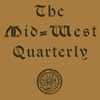
Mid-West Quarterly (1913–1918)
Date of this Version
1913
Document Type
Article
Abstract
The object of early travel from the Missouri River to the region beyond the Rocky Mountains was, first, exploration, as in the example of the expeditions of Lewis and Clark and Fremont; second, trapping and trading; third, the colonization of Oregon; fourth, the reaching of the California and intra-montane gold mines; fifth, the transportation of soldiers and military supplies for the protection of these enterprises from hostile Indians. Prior to the period of transcontinental railroad-building there were several rival experimental routes to the northerly part of those regions and more particularly to Oregon; but the Platte River route, known as the Oregon trail, gained supremacy during the decade of 1830-1840 and held it until the opening of the Pacific roads north of the first (Union Pacific) line divided the traffic. The military department of the federal government, including its engineers, had faith in the superiority of upper routes while the general traffic persistently preferred the Platte route. In this test native instinct and experiment seem to have been wiser than science unassisted by experimental knowledge.


Comments
Published in THE MID-WEST QUARTERLY Vol. 1, No. 1 (October 1913).